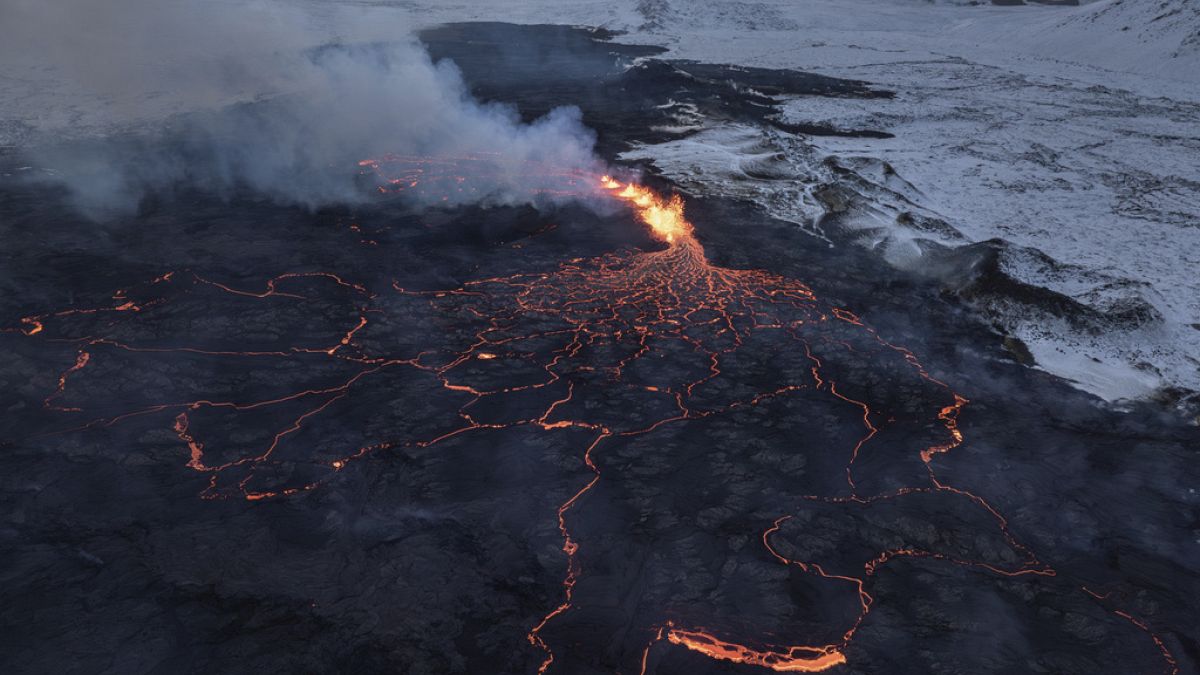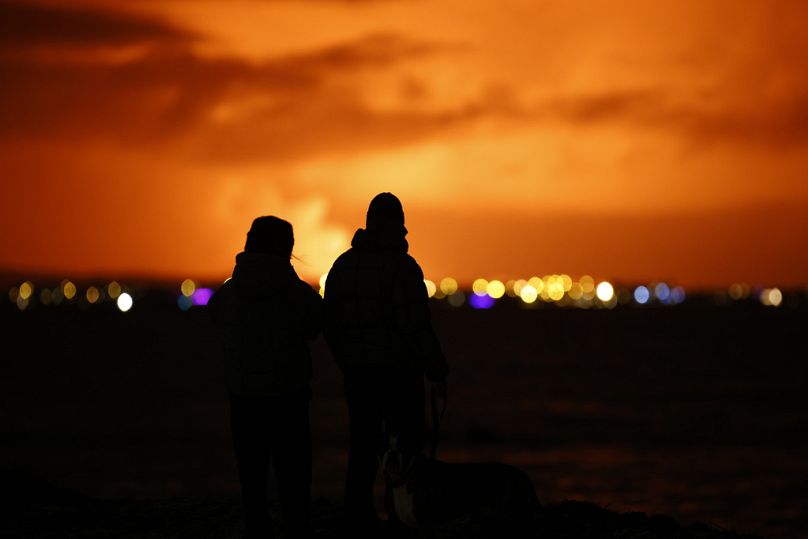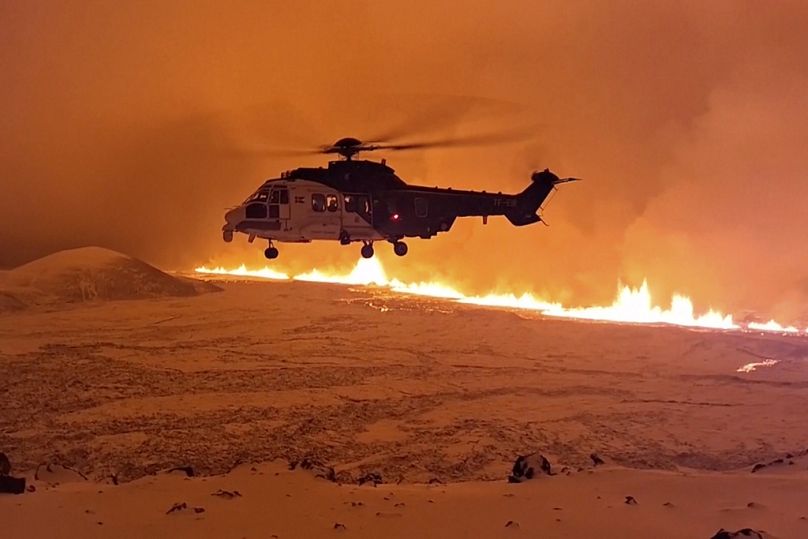Hundreds of cubic meters of lava per second flowed out in the first two hours of the eruption on Monday, though the activity has significantly subsided.
Magma continued to spew from an Iceland volcano on Tuesday night, lighting up the sky in a glow of orange.
A volcano in southwestern Iceland erupted on Monday night, initially sending a flash of light into the evening sky and spewing semi-molten rock into the air in a spectacular show of the Earth's power in the land known for fire and ice.
The eruption appeared to have occurred about four kilometres from the town of Grindavik, the Icelandic Meteorological Office said.
The town near Iceland's main airport was evacuated in November after strong seismic activity damaged homes and raised fears of an imminent eruption.
Iceland, which sits above a volcanic hot spot in the North Atlantic, averages an eruption every four to five years.
The eruption started at about 10:20 p.m. local time on Monday north of Grindavik, a fishing town of 3,400 people on the Reykjanes Peninsula.
First there was a series of small earthquakes. Then lava at some 1,200 degrees Celsius began pouring out of a fissure about 4 kilometres long.
The Icelandic Meteorological Office estimated that hundreds of cubic meters of lava per second flowed out in the first two hours of the eruption, though the activity had significantly subsided by Tuesday afternoon.
The most disruptive eruption in Iceland in recent times was the 2010 eruption of the Eyjafjallajokull volcano, which spewed huge clouds of ash into the atmosphere and led to widespread airspace closures over Europe.
But the eruption on the Reykjanes Peninsula, about 50 kilometres southwest of the capital, Reykjavik, wasn't expected to release large amounts of ash into the air.
Iceland’s foreign minister, Bjarne Benediktsson, tweeted that there were no disruptions of flights to and from the country, and international flight corridors remained open.
By early Tuesday afternoon, the Icelandic Meteorological Office reported that the size of the volcanic eruption at Sundhnuksgígar “continues to diminish.''
It said the lava flow was estimated to be a quarter of what it was at the time of the eruption.
Lava ”fountains,'' which reached as high as 30 meters, have also been falling.
Prime Minister Katrin Jakobsdottir told RUV that for now, the lava was not endangering critical infrastructure near the volcano.
Although the lava flow was moving in a promising direction, precautions were nevertheless being taken near the Svartsengi power plant.
The November evacuation of Grindavik meant few people were near the site of eruption when it occurred, and authorities have warned others to stay away.
The nearby Blue Lagoon geothermal spa — one of Iceland’s biggest tourist attractions — also closed temporarily last month as a swarm of earthquakes put the island nation on alert for a possible volcanic eruption.


